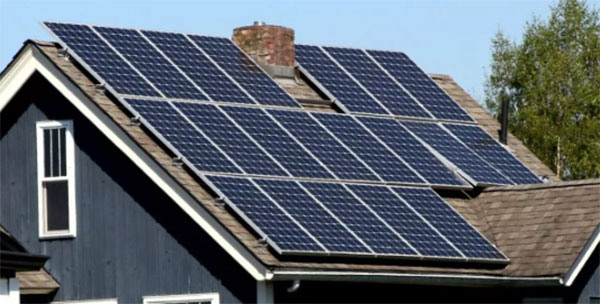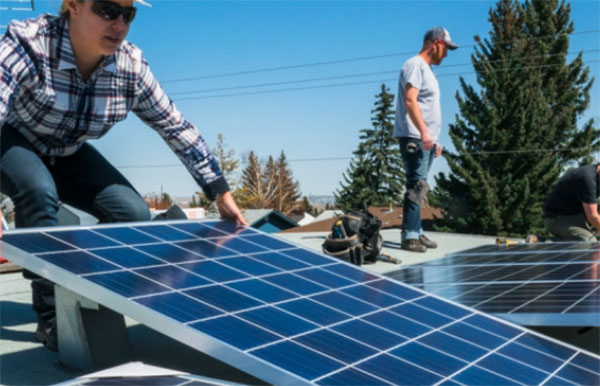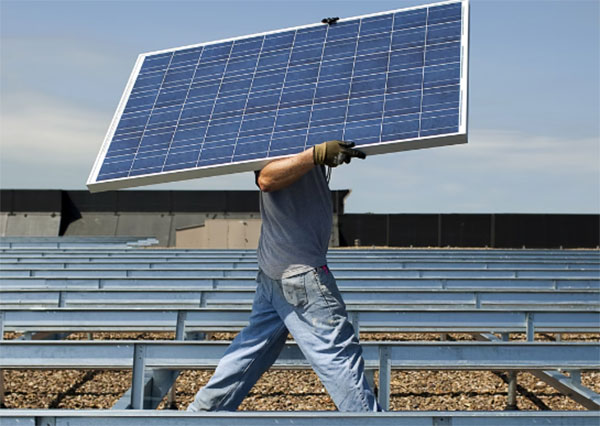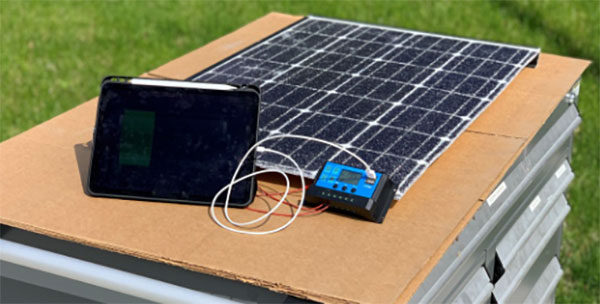Description
Yes, future solar panels will likely become smaller due to advancements in efficiency and nano-material technologies, enabling more compact designs.Technological Advances in Solar Panel Efficiency
The relentless pursuit of higher efficiency and lower cost in the solar panel industry has led to significant technological advancements. These innovations not only promise to make solar energy more accessible but also to increase the adoption rate across various sectors.Nano-materials and Their Impact on Solar Cell Design
Nano-materials have revolutionized solar cell design by introducing the possibility of increasing the absorption of sunlight and reducing electron recombination. The use of quantum dots, for instance, has enabled solar cells to capture a broader spectrum of sunlight, potentially increasing efficiency by up to 30%. Materials like graphene are being researched for their ability to conduct electricity more efficiently, which could reduce the overall cost of solar panels by 15-20% over the next decade.- Key Benefit: Enhanced light absorption and electrical conductivity
- Efficiency Potential: Up to 30% increase
- Cost Reduction: Estimated 15-20% decrease in the next 10 years
Photovoltaic Technology Innovations
Photovoltaic technology has seen a leap in efficiency with the development of perovskite solar cells. These cells offer a low-cost alternative to traditional silicon-based cells, with a rapid increase in efficiency from 20% to over 25% in just a few years. Their lightweight nature and flexibility make them suitable for a variety of applications, from portable devices to building-integrated photovoltaics (BIPV).- Efficiency Improvement: From 20% to over 25% in recent years
- Cost Advantage: Significantly lower than silicon-based solar cells
- Application Versatility: Portable electronics to BIPV
Breakthroughs in Thin-Film Solar Cells
Thin-film solar cells have made substantial progress, particularly in terms of reducing thickness and increasing efficiency. The latest advancements have seen thin-film cells achieving efficiencies of up to 22%, while being only a few micrometers thick. This reduction in material usage directly translates to lower manufacturing costs and greater flexibility in application. Moreover, the lifespan of thin-film solar cells has been extended to over 25 years, making them a more valuable investment for long-term energy projects.- Efficiency Milestone: Achieving up to 22%
- Thickness: Only a few micrometers
- Lifespan Enhancement: Extended to over 25 years
The Role of Size in Solar Panel Performance
The relationship between the size of solar panels and their performance is a critical aspect of solar technology that affects efficiency, cost, and the feasibility of solar solutions in various environments.Size vs. Efficiency: Finding the Balance
The quest for efficiency in solar panels often revolves around optimizing the size to maximize energy production within a given area. Larger panels can generate more power (measured in watts) due to their larger surface area exposed to sunlight. A standard large solar panel might produce around 250 to 400 watts, while smaller, more compact panels produce significantly less. However, advancements in technology have led to higher efficiency rates in smaller panels, with some compact designs reaching efficiency levels of over 20%. This balance is crucial for maximizing the use of space, especially in areas where space is a premium.- Key Comparison: Larger panels produce more power but may not be the most efficient use of space.
- Efficiency Rates: Compact designs have reached efficiency levels over 20%.
Compact Solar Solutions for Urban Environments
In urban environments, space constraints necessitate the development of compact solar solutions. These solutions include solar shingles and integrated photovoltaic (BIPV) systems, which seamlessly blend into building aesthetics while providing energy. For instance, solar shingles can offer a power output of 13-63 watts per shingle, allowing for a customizable power generation solution based on roof size. The cost of these technologies can vary, with solar shingles costing between $15 to $25 per square foot, making them a competitive option against traditional solar panels in terms of both aesthetics and function.- Innovative Solutions: Solar shingles and BIPV systems.
- Cost Range: $15 to $25 per square foot for solar shingles.
The Impact of Panel Size on Installation and Maintenance
The size of solar panels significantly impacts their installation and maintenance. Larger panels might offer higher power output but require more space and stronger support structures, which can increase the installation costs. On average, installation of a residential solar panel system can cost between $15,000 to $25,000, with larger systems on the higher end due to additional structural supports and labor. Conversely, smaller panels are easier to handle and install, potentially reducing labor costs. Maintenance complexity also scales with size; larger arrays may present more challenges in terms of cleaning and repair, particularly on rooftops or in dense urban areas.- Installation Costs: Between $15,000 to $25,000 for residential systems, influenced by panel size.
- Maintenance Considerations: Larger arrays may be more challenging to maintain.
Future Trends in Solar Panel Manufacturing
The future of solar panel manufacturing is poised at the brink of transformative changes, driven by innovations in technology, customization, and a heightened awareness of environmental impacts. These trends are not only shaping the way solar panels are made but also how they integrate into our daily lives and the global energy grid.Scalability of New Solar Technologies
The scalability of emerging solar technologies is a pivotal trend, with manufacturers exploring new materials and processes to enhance efficiency and reduce costs. Perovskite solar cells, renowned for their low production costs and high efficiency potential surpassing 25% in some instances are at the forefront. The scalability of such technologies promises a reduction in solar energy costs, potentially lowering the price per watt to below $0.20, making solar energy more accessible worldwide.- Highlight: Perovskite solar cells offer a significant cost-efficiency balance.
- Economic Impact: Potential to reduce the price per watt to below $0.20.
Customizable Solar Panels for Diverse Applications
Customization in solar panel manufacturing is revolutionizing their application across various sectors. From flexible solar films that can be applied to the surfaces of consumer electronics, vehicles, and building facades to solar fabrics for wearable technology, the ability to customize shape, size, and power output is expanding the utility of solar panels. This trend not only caters to the aesthetic integration into everyday objects but also enhances functional value, with power outputs for these innovative applications varying significantly based on size and technology used.- Innovation: Flexible solar films and solar fabrics.
- Application Diversity: Enables solar integration into electronics, vehicles, wearables, and buildings.
Environmental Considerations in Solar Panel Production
Environmental sustainability in solar panel production is receiving unprecedented focus. Manufacturers are increasingly adopting recyclable materials and energy-efficient production methods. The life cycle analysis of solar panels indicates that the carbon footprint of solar panel production can be further reduced by up to 30% with the adoption of greener materials and processes. Moreover, the industry is moving towards zero-waste manufacturing practices, aiming to minimize the environmental impact from the production to the disposal of solar panels.- Sustainability Focus: Use of recyclable materials and energy-efficient production methods.
- Environmental Goal: Reduction of carbon footprint by up to 30%.
Integration of Solar Panels into Everyday Objects
The integration of solar panels into everyday objects is a burgeoning trend that marks a significant leap towards ubiquitous solar energy use. This shift not only emphasizes renewable energy's role in our daily lives but also showcases the innovative applications of solar technology beyond traditional setups.Solar-Powered Wearables
Solar-powered wearables are at the forefront of merging fashion with functionality, offering users the ability to harness solar energy to power devices on the go. These wearables, including watches, fitness trackers, and even clothing, incorporate thin, flexible solar panels capable of generating power ranging from 1 to 5 watts depending on exposure and panel efficiency. This innovation not only reduces dependency on conventional charging methods but also extends device lifespan, making it a cost-effective solution over time.- Innovative Aspect: Incorporation of thin, flexible solar panels into wearable technology.
- Power Generation: Capable of 1 to 5 watts, enhancing device autonomy.
Building-Integrated Photovoltaics (BIPV)
Building-integrated photovoltaics (BIPV) represent a revolutionary approach to incorporating solar panels into the architectural design of buildings. BIPV systems can replace conventional building materials in parts like the roof, facades, and windows, transforming entire structures into energy-generating units. These systems not only offer a seamless aesthetic integration but also significantly contribute to a building's energy needs, potentially covering 20 to 30% of a building's total energy consumption. The cost of BIPV systems varies, but the long-term energy savings and potential incentives can offset the initial investment, making it a financially viable option.- Architectural Integration: Replacement of traditional building materials with energy-generating units.
- Energy Contribution: Can cover 20 to 30% of a building's total energy requirements.
Innovations in Portable Solar Charging Devices
The development of portable solar charging devices has opened new avenues for on-the-go energy generation, catering to the increasing demand for mobile power solutions. These devices range from compact solar-powered chargers for smartphones and tablets to larger, foldable panels for camping and outdoor activities, with power outputs varying from 5 to 100 watts. The versatility and portability of these devices underscore the advancements in solar panel efficiency and design, providing a reliable power source while reducing reliance on grid electricity.- Mobile Power Solutions: Range from compact chargers to foldable panels for outdoor use.
- Power Output Range: 5 to 100 watts, offering versatility in application.







